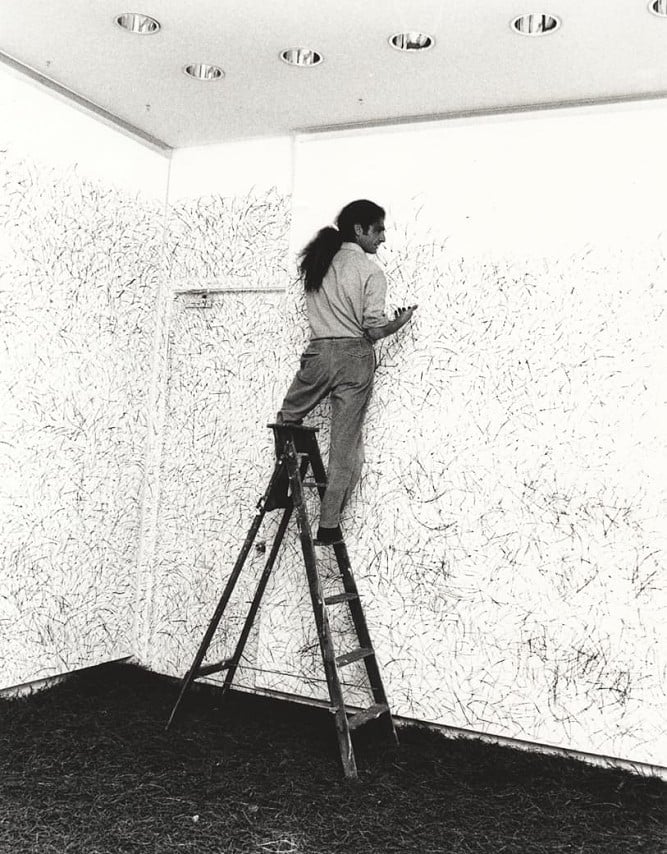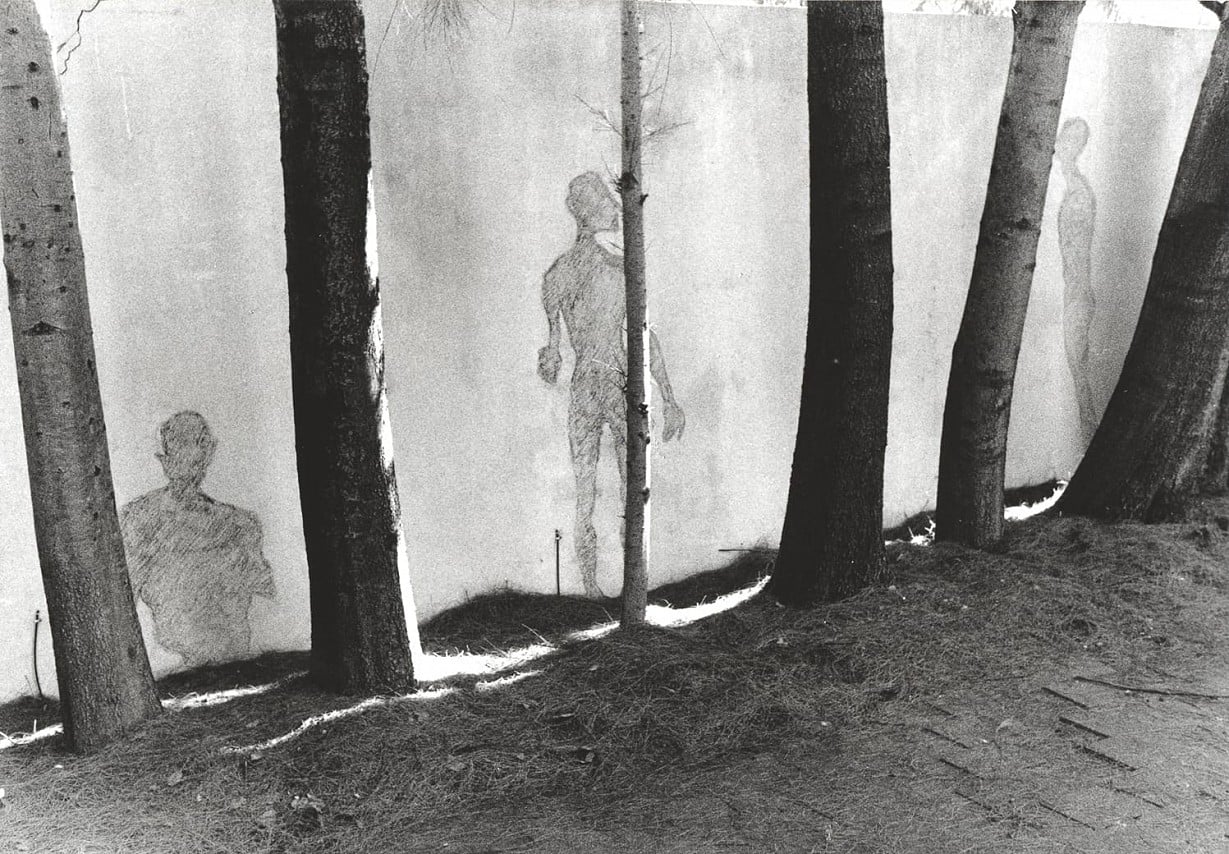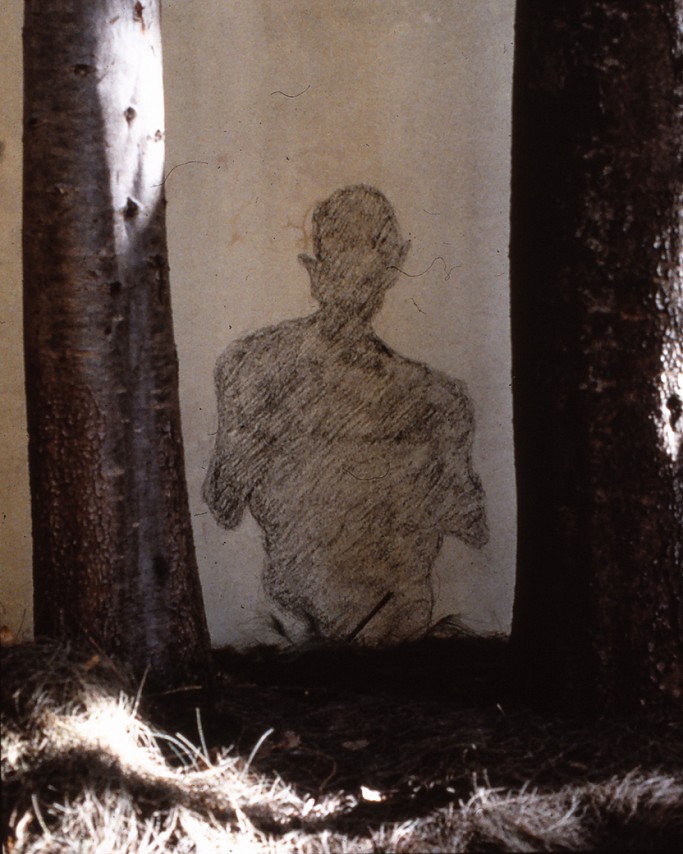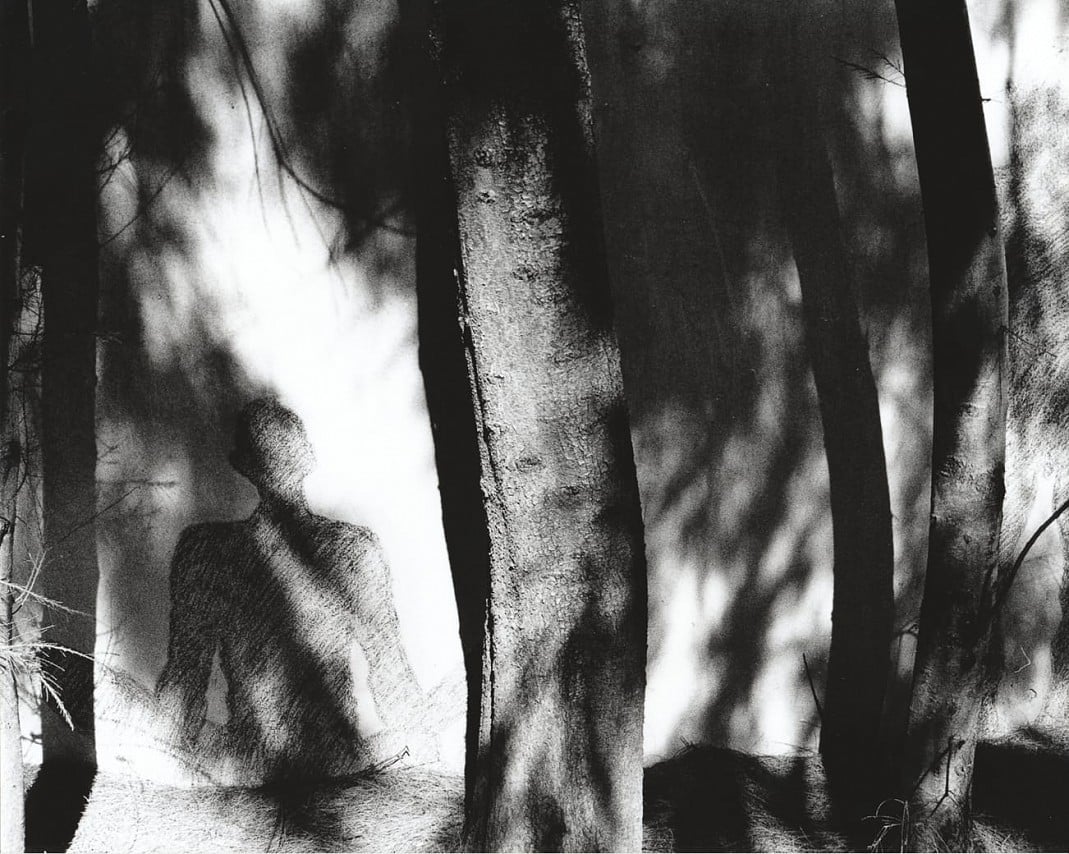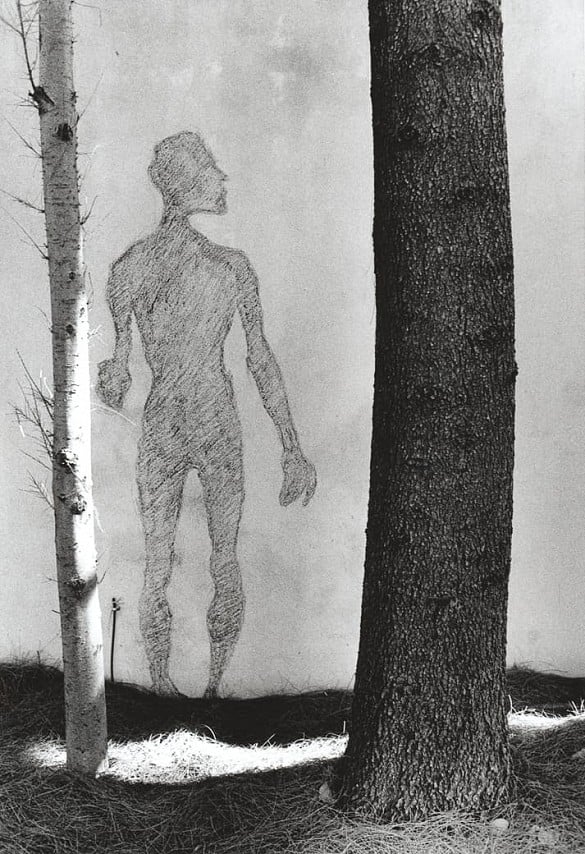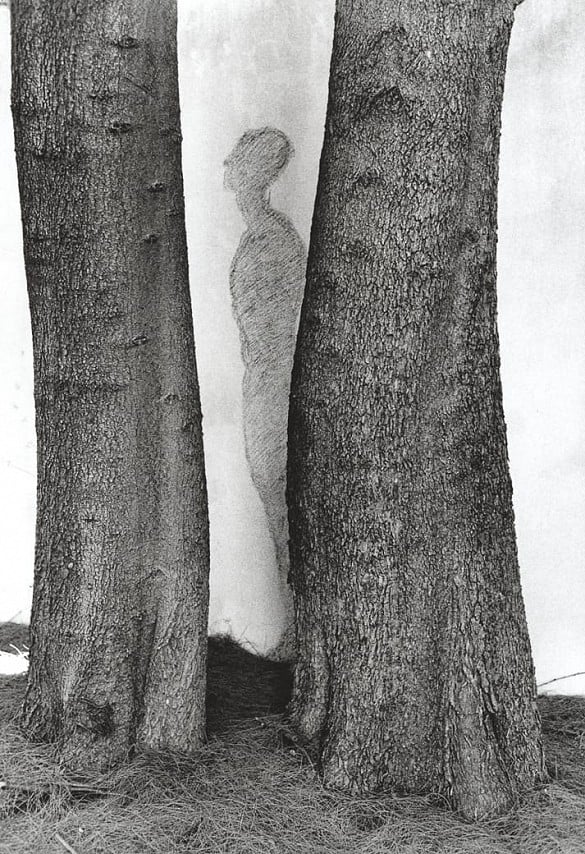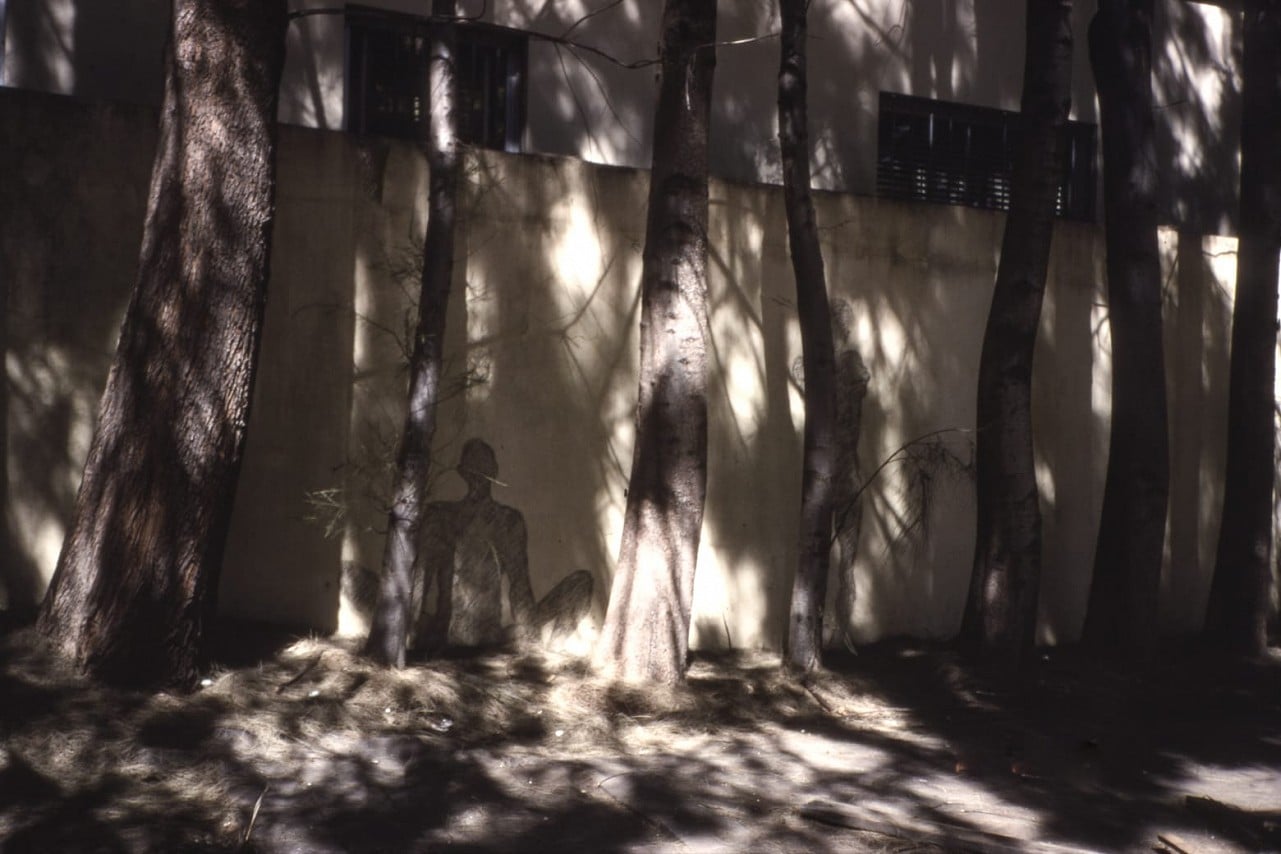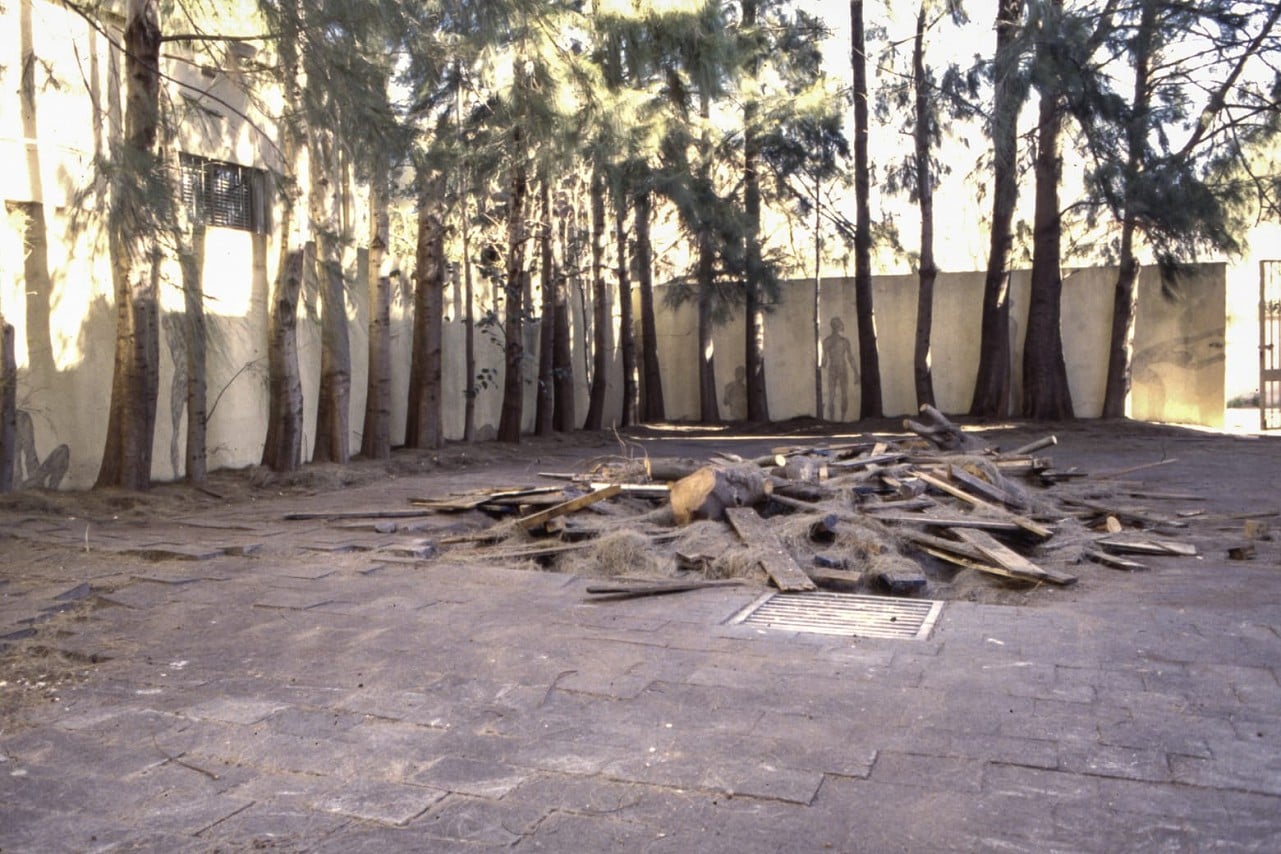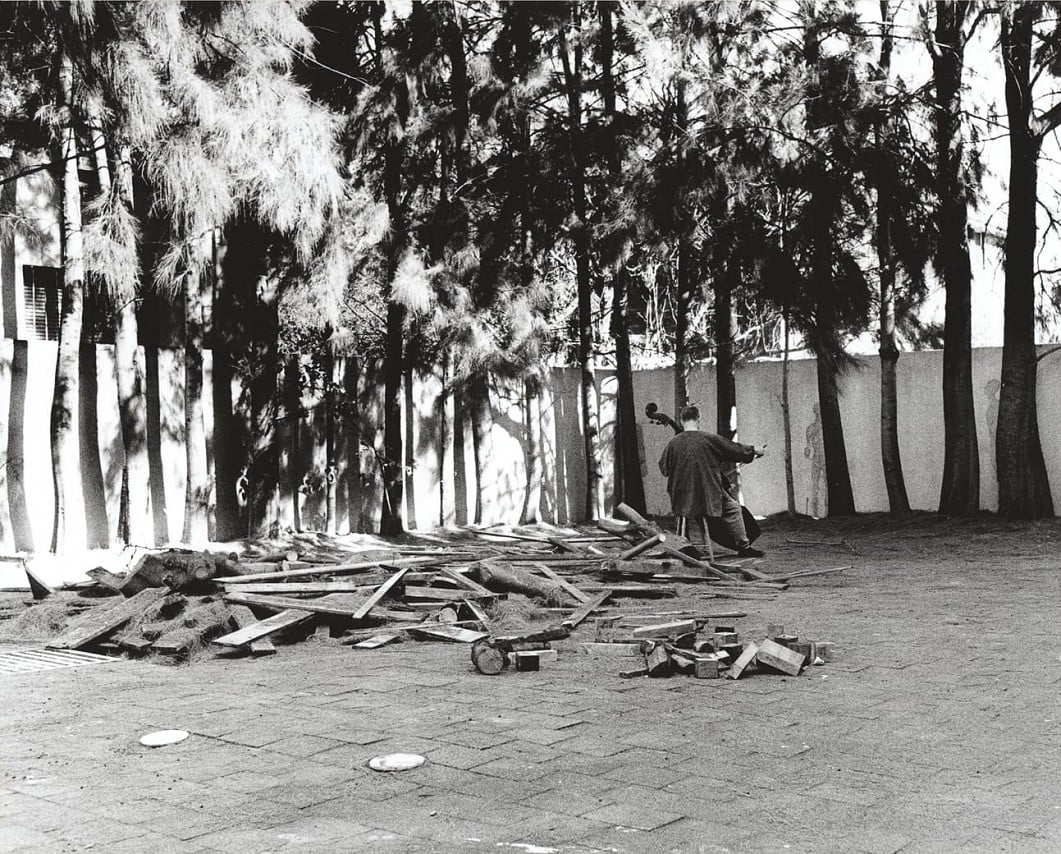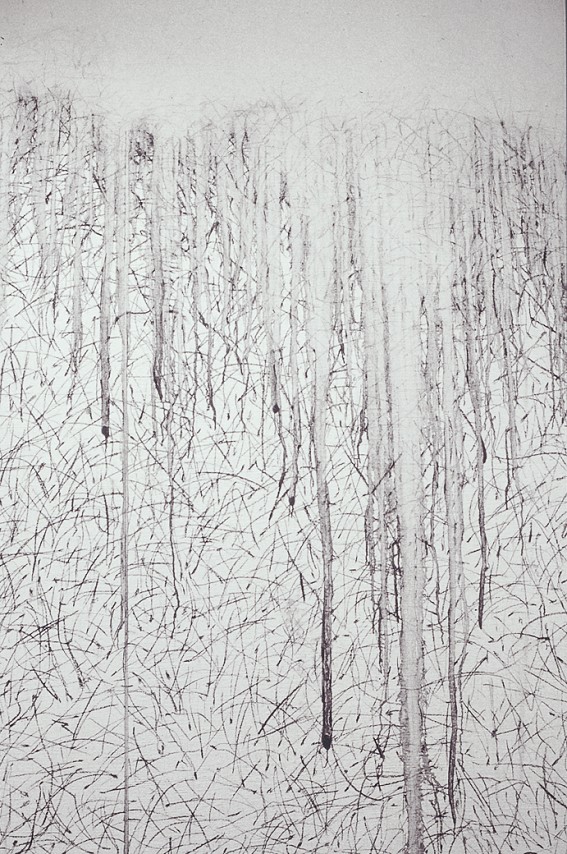Fadeout 1994
14 Sep 1994 : Australian Centre for Photography, Oxford Street, Paddington, Sydney, Australia
Installation and continuous drawing action Event: Temporary Hoarding
Part of the series Temporary Hoardings, Fadeout was one of the final works in the galleries before renovation. This project was executed as an installation and continuous drawing action. To commence the project I retrieved materials from nearby sites: collecting bags of pine needles from Centennial Park and vintage pine floorboards and timbers from Paddington Town Hall, which was also undergoing renovation. The title Fadeout referred to the ensuing changes that were going to occur in the renovations to the ACP, especially the removal of the casuarina trees in the courtyard. The work comprised several elements: 1/ In the gallery the work comprised a durational drawing action in charcoal in a room of which I had covered the floor in pine needles. In this room I drew pine needles in charcoal up and around the walls from floor to ceiling. 2/ On the street facade window ledge I placed salt, and made salt body imprints on the glass. 3/ In the courtyard I drew graphite body silhouettes as shadows between the casuarina trees. 4/ In the courtyard I placed a large amount of found timbers as if for a fire. On the Saturday Richard Ratajczak performed there on double bass.
Fadeout was an opportunity to fit many ideas into one work, as Temporary Hoardings was the last series of events in the ACP before its renovations took place. My work lamented the passing of a landscape, that of the she-oaks or casuarinas in the rear courtyard. My project was to work with the transition from inside to outside as both a celebration and a lament; the celebration of a return to nature, to the trees, sun, wind and air, and of the escape from the constraints and artifice of the gallery environment. A lament for what is sacrificed to create the city and for what is personally lost. In this case a lament for the trees and open space outside. It was a response to a recent trip to the Outback and an opportunity to process unresolved insights from that experience. The other themes were of rubble and of body imprints, both traces. The body imprint was fitting subject for a photography gallery and referred to my principal activity as performer: here intended as a more direct and less mediated approach to capturing an image of the body in a frozen moment. The imprints were of two types: In the front windows of the gallery I made directly transferred salt imprints from my body onto the glass, a reference to the frosted windows I had seen in Russia that year, but also to sweat and traces of labour.
In the rear courtyard I drew silhouettes: solid figures in graphite drawn onto the walls of the courtyard in spaces in between the trees, whose shadows then fell between the drawings. Theses shadows of man and tree were passages, movements, a dance of time. The silhouettes were of myself and co-performer Ari Ehrlich made by directly tracing the outlines of one another’s body. I then blocked-in the outlines with solid graphite. These imprints referenced the documents of the performance act, traces of what had gone before: photography or video, but also traces of presence. Other rubble comprised a quantity of lumber from renovation works beside Centennial Park and from Paddington Town Hall and lifted paving bricks from the gallery’s courtyard. The timber was piled for a bonfire in the courtyard in the form of a long ceremonial pit intended to glow for days, although ultimately (following discussions with the fire-brigade) no fire was made. To the gallery I brought bags and bags of pine-needles from Centennial Park, which were laid down as a thick carpet in one room. The five-day drawing-action consisted of a spiraling activity around the room and up the walls, drawing charcoal representations of individual pine needles. With these marks on the walls I continued to fill the room with pine needles from floor to ceiling. In this way I filled the inside with an imaginary outside and allowed darkness to encroach and rise (where usually it is said to descend). The work had references to the BIC brand blue ballpen works of Belgian Theatre Director and artist Jan Fabre, and also relates to Japanese author Jun’ichiro Tanizaki’s essay: In Praise of Shadows. An unexpected discovery was made at the end of the work whilst washing down the walls in preparation for re-painting. I washed in reverse order, from top to bottom and found that the mixture of water and charcoal made a black ink wash (a sumi) which ran down the walls over the criss-crossing charcoal lines creating a most beautiful effect.
As footnote I had collaborated with Polish-born double bass player Ryszard Ratajczak in free-improvised duets or small groupings in which I danced, between 1986-1988 and again in 1992. Ari Ehrlich had joined me as a member of Gravity Feed in 1992.
Project Details
| Dates | 14 Sep 1994 to 17 Sep 1994 |
| Duration | 4 days |
| Collaborators | Richard Ratajczak (22/07/1950 – 28/08/2017), Ari Ehrlich |
| Producer | Australian Centre for Photography, Director & Curator : Deborah Ely |
| Category | installations |
| Credits | Photos: Heidrun Löhr (except window image Alan Schacher); Double Bass performance by Richard Ratajczak ; Body silhouettes in the courtyard made with Ari Ehrlich ; Charcoal purchase assisted by the UNSW College of Fine Arts Students' Association. |
